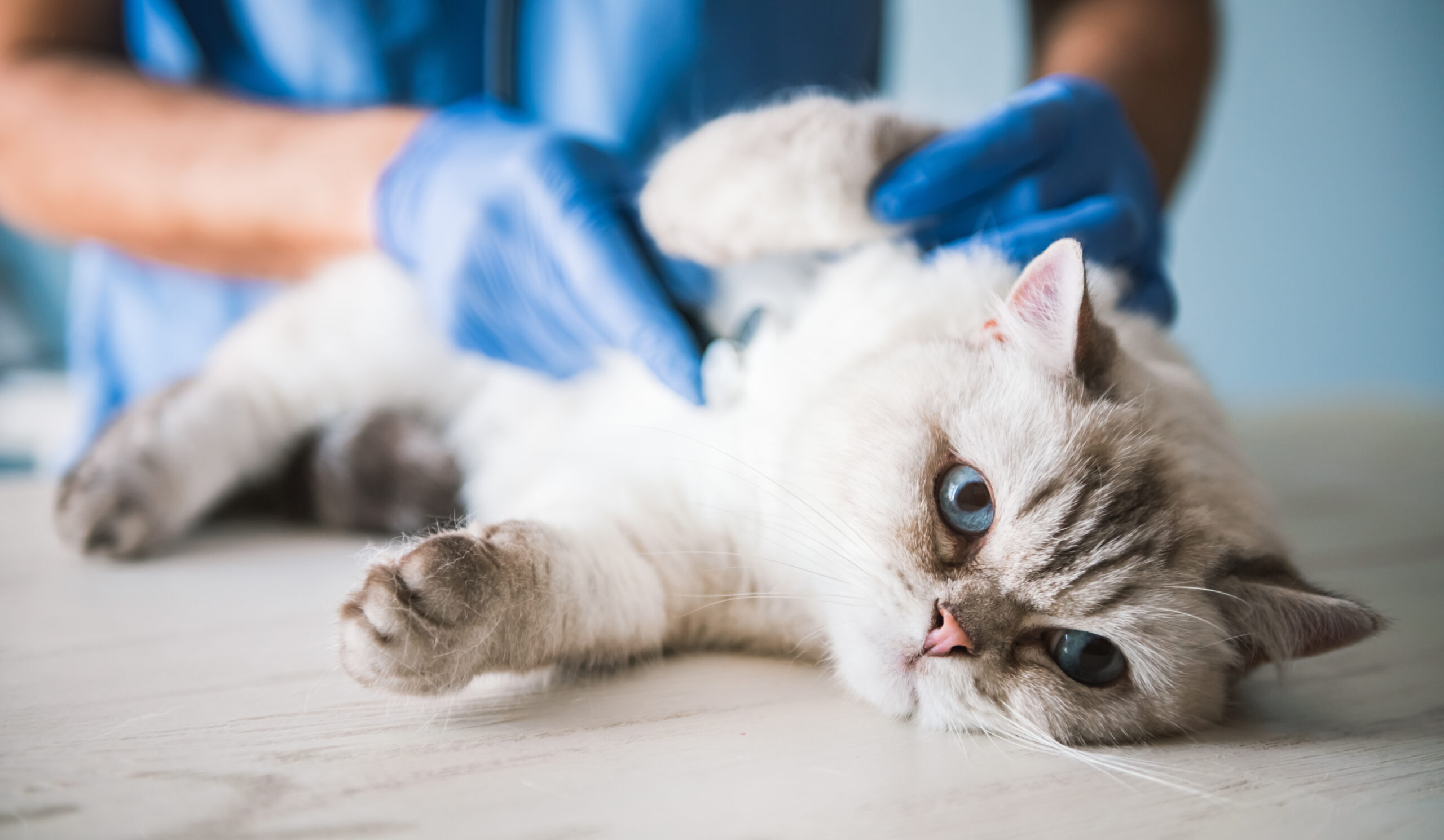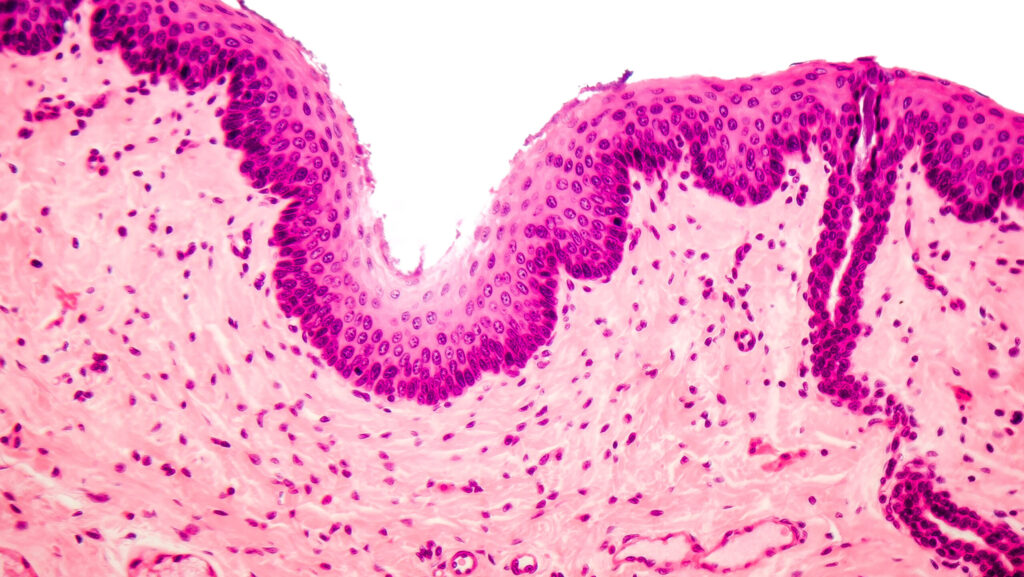Research Roundup November 2024
Check out how researchers at the NC State College of Veterinary Medicine are pioneering solutions for both animal and human health through impactful collaborations, cutting-edge approaches and novel educational tools that continue to reshape the landscape of medicine.

Enhancing Veterinary Care through Adaptive Treatment Planning
Hohenhaus AE, Provost DC.
More veterinarians are adopting a “Spectrum of Care” approach to address the diverse needs of pet owners and pets, particularly when expensive, high-end treatments are not always appropriate or feasible for clients. One tool to aid in this effort is the Spectrum of Care Options Presentation and Explanation (SCOPE), a table created by the care team in which the rows are features of testing and treatment the veterinarian feels are important to communicate, like protocol, estimated costs and treatment schedule, and the columns are the different plans of treatment. The document allows veterinarians to communicate a range of treatment options to the clients. SCOPE is currently being used as a hybrid teaching and communication tool by rotating interns when they lead an initial oncology consultation. A recent research article, coauthored by the College of Veterinary Medicine’s Research and Outreach Librarian Dave Provost, tested the SCOPE tool during oncology consultations, where the document was useful in identifying treatment options for pets with cancer, fostering self-regulated learning for veterinary interns, and addressing contextual issues that affect the patient’s care plan. The article outlined how this tool can be applied in various veterinary disciplines and learning environments, including veterinary student education and early career mentoring, to promote a more inclusive and adaptable approach to veterinary care.
The study was published in the Journal of Veterinary Medical Education and can be found here.

Studying Skin Absorption of Chemical Compounds
Hall AS, Baynes R, Neumann LM, Maibach HI, Ormond RB.
Per- and polyfluoroalkyl substances (PFAS) are compounds found in a variety of everyday items including cosmetics, upholstery, food packaging, and more. Some PFAS have been identified as immunosuppressants, and a certain PFAS called perfluorooctanoic acid has been identified as carcinogenic. Due to the close contact these compounds have with our skin, especially in cosmetics and fabrics, it is important to know how much our skin absorbs them. Researchers, including experts from the CVM’s Department of Population Health and Pathobiology and the NC State Wilson College of Textiles, investigated how much certain PFAS compounds are absorbed through the skin using porcine skin in a lab setup. Researchers tested three PFAS compounds over 8 hours with two different vehicles, acetone and artificial perspirant. The results showed that while all three PFAS showed low overall absorption rates through the skin, they could still accumulate in the skin and act as a reservoir. This study highlights the need to continue to study dermal exposure to these common substances.
This study was published in Toxics and can be found here.
The Important Role of Bed Bugs in Forensic Investigations
Meiklejohn KA, Schal C, Lodhi KM.
Bed bugs, pesky parasites that feed on blood, could be valuable for DNA profiling during investigations. Previous research has shown that it’s possible to extract human DNA from the blood meals of insects, including this species. A recent study led by NC State’s Dr. Kelly Meiklejohn explored bed bugs’ forensic potential by investigating whether DNA from human males can be effectively profiled if the bugs are fed exclusively human male blood or mixed female and male blood. Researchers looked for the presence of the human Y chromosome, unique to males, in samples extracted from the insects. The results of the study suggest that bed bugs could be useful for gathering human blood samples at crime scenes, potentially linking male suspects to crimes or excluding them. Future studies should involve more bed bugs, a wider range of blood donors, and additional DNA testing methods to further validate these results.
The study was published in the Journal of Forensic Sciences and can be found here.

Improving Radiation Treatment Planning for Canine Carcinomas
Freemyer CC, Gieger TL, Vaden SL, Nolan MW.
Canine genitourinary carcinomas are common tumors in dogs that affect the urinary tract and cause symptoms like blood in the urine and difficulty urinating. These tumors can lead to severe complications and are often deemed incurable, but treatments like surgery and anti-inflammatory drugs can improve survival and quality of life. Another option is radiation therapy; however, it is not always successful because of factors like resistant tumor cells and errors in radiation targeting. To improve the odds of successful treatment, a recent study led by urology and cancer experts from our Department of Clinical Sciences aimed to see if adding cystourethroscopy to radiation planning would improve the treatment outcomes by identifying a larger tumor area than CT scans alone. Cystourethroscopy is a surgical procedure that allows a doctor to see the inside of the bladder and urethra. The researchers found that using cystourethroscopy allowed clinicians to better visualize the tumors’ size, helping them realize the growths were a median of 6.5 cm bigger than shown in CT imaging alone in nearly half of the cases. Without this additional information, it is possible the clinicians would have underestimated the tumor extent in about a third of the dogs that participated in the study. These promising results suggest that using cystourethroscopy in treatment planning could help improve tumor control.
This study was published in Veterinary and Comparative Oncology and can be found here.
Studying the Roles of LGR5+ Cells in Lung Development and Repair
Polkoff KM, Lampe R, Gupta NK, Murphy Y, Chung J, Carter A, Simon JM, Gleason K, Moatti A, Murthy PK, Edwards L, Greenbaum A, Tata A, Tata PR, Piedrahita JA.
LGR5+ cells play crucial roles in tissue homeostasis, repair, and regeneration across several different organs, including the skin and gastrointestinal tract, but their role in the lung is less understood. A recent study explored the role of LGR5+ cells in the lung using a transgenic pig model, which research shows can better reflect human biology than the commonly used mouse model. The investigators, including members of the NC State CVM’s Department of Molecular Biomedical Sciences as well as collaborators from Duke University and UNC-Chapel Hill, identified two main populations of LGR5+ cells in the lung: One in the epithelial cells during fetal development and another in the mesenchymal cells around airways. In the fetus, LGR5+ is temporarily expressed in some cells, but it is not present in the lung after birth, though it reappears in certain airway cells in organoid models. The mesenchymal LGR5+ cells are found near the airways, are associated with nerve fibers and include types of fibroblasts that show unique patterns of signaling molecules. These findings suggest that LGR5+ cells have distinct roles in lung development and repair, providing a useful model for future studies on lung regeneration.
The study was published in the American Journal of Respiratory Cell and Molecular Biology and can be read here.
Research Connection: The Importance Behind Stem Cell Communities in the GI System with Dr. Neil McCarthy
Dr. Neil McCarthy, assistant professor in the Department of Molecular Biomedical Sciences, joined the CVM faculty on Sept. 1. His research focus is on stem cell niches in the gastrointestinal tract and addresses the fundamental aspects of stem cell niche interactions in development, regeneration, and disease. Dr. McCarthy joins the CVM’s faculty after completing his postdoctoral work at the Dana-Farber Cancer Institute in Boston, before that earning a Ph.D. at the University of Texas at Austin. He is also excited to collaborate with the other members of the GI research and clinical specialist group at NC State College of Veterinary Medicine and across the Triangle. Just like our cells rely on strong communities, so do the members of our Wolfpack!
- Categories:


